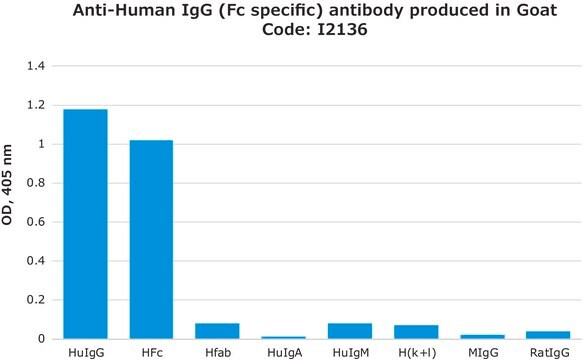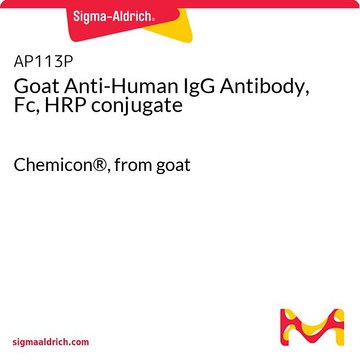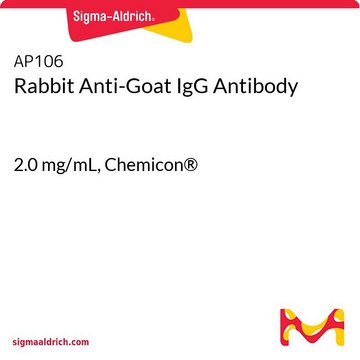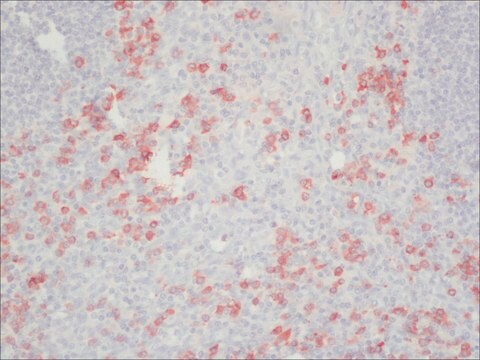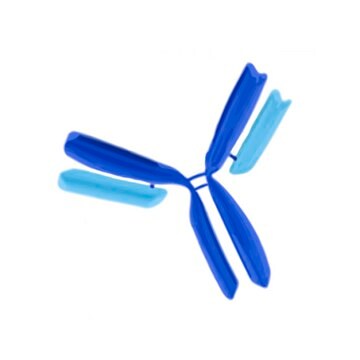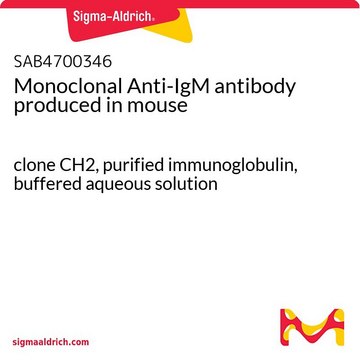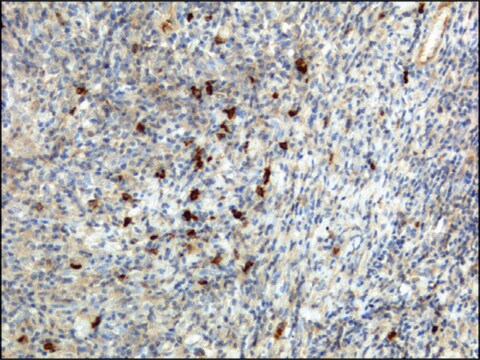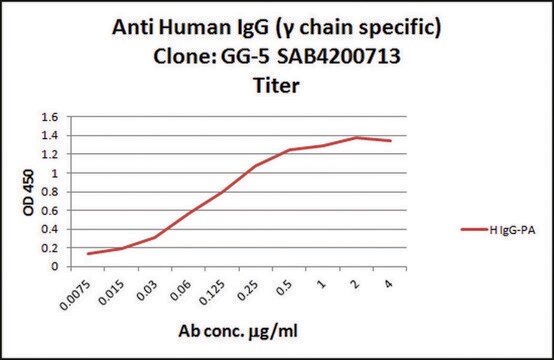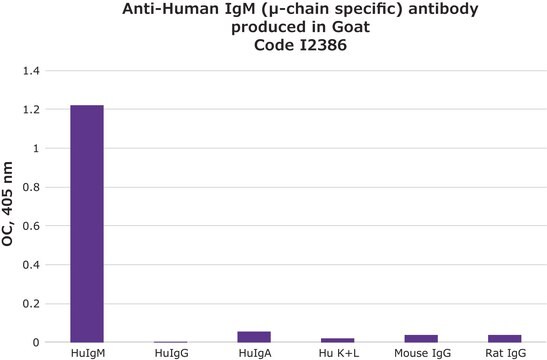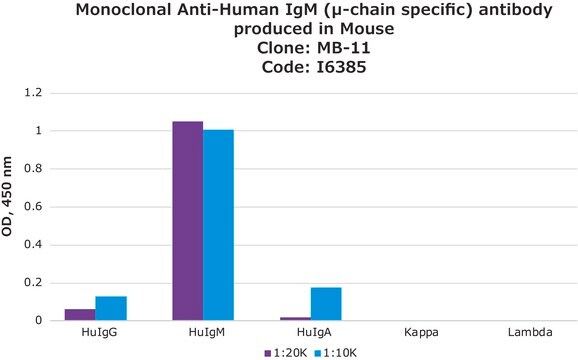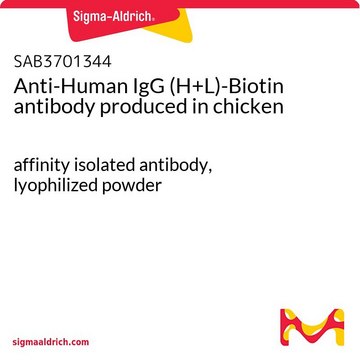MABX1901
Anty-ludzka IgG (1 mg) KC
from mouse
About This Item
Polecane produkty
pochodzenie biologiczne
mouse
forma przeciwciała
purified antibody
rodzaj przeciwciała
secondary antibodies
klon
monoclonal
reaktywność gatunkowa
human
metody
ELISA: suitable
immunodiffusion: suitable
izotyp
IgG2b
Opis ogólny
Immunoglobulina G (IgG), izotyp immunoglobuliny, jest najobficiej występującym białkiem w ludzkiej surowicy i stanowi 10-20% białek osocza. Składa się z glikoprotein zawierających 82-96% białek i 4-18% węglowodanów. IgG jest dalej klasyfikowana do podklas IgG1, IgG2, IgG3 i IgG4. IgG składa się z czterech łańcuchów polipeptydowych, z dwoma łańcuchami ciężkimi (łańcuchy γ) i dwoma łańcuchami lekkimi (łańcuchy κ lub λ), które są połączone międzyłańcuchowymi wiązaniami dwusiarczkowymi. Jest wydzielana przez limfocyty B i znajduje się w płynach pozakomórkowych i krwi.
Specyficzność
Immunogen
Zastosowanie
Działania biochem./fizjol.
Jakość
Postać fizyczna
Inne uwagi
Nie możesz znaleźć właściwego produktu?
Wypróbuj nasz Narzędzie selektora produktów.
Kod klasy składowania
12 - Non Combustible Liquids
Klasa zagrożenia wodnego (WGK)
WGK 2
Temperatura zapłonu (°F)
Not applicable
Temperatura zapłonu (°C)
Not applicable
Certyfikaty analizy (CoA)
Poszukaj Certyfikaty analizy (CoA), wpisując numer partii/serii produktów. Numery serii i partii można znaleźć na etykiecie produktu po słowach „seria” lub „partia”.
Masz już ten produkt?
Dokumenty związane z niedawno zakupionymi produktami zostały zamieszczone w Bibliotece dokumentów.
Klienci oglądali również te produkty
Produkty
Antibody-based serology tests are useful in identifying subjects with an adaptive immune response to the SARS-CoV-2 virus. Anti-human immunoglobulin antibodies allow for quick and simple, yet reliable assays with easy readouts and can also be adapted for high-throughput screening.
Nasz zespół naukowców ma doświadczenie we wszystkich obszarach badań, w tym w naukach przyrodniczych, materiałoznawstwie, syntezie chemicznej, chromatografii, analityce i wielu innych dziedzinach.
Skontaktuj się z zespołem ds. pomocy technicznej
